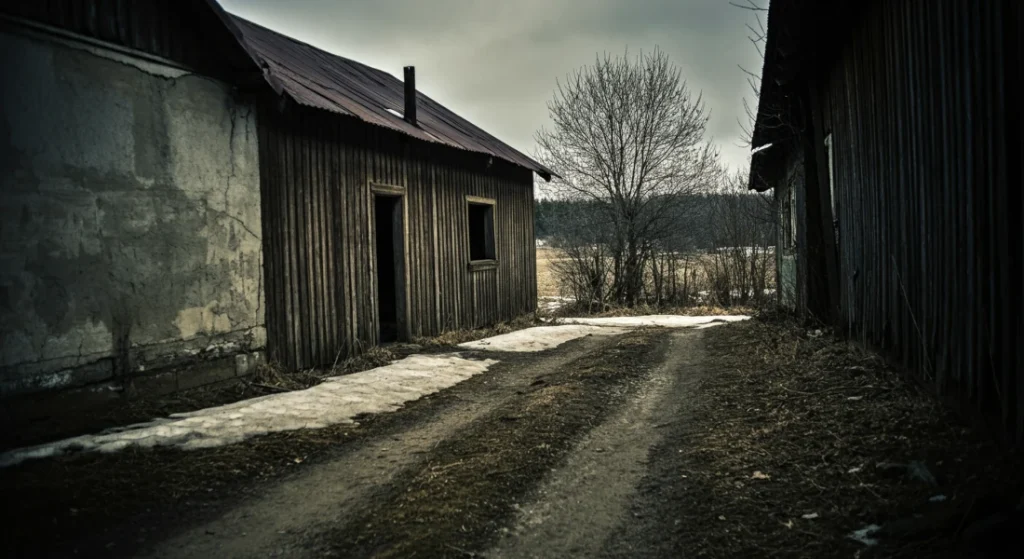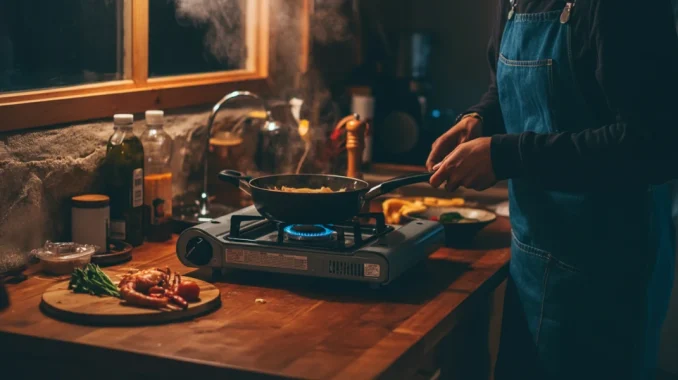In a crisis situation—whether due to war, natural disaster, or prolonged blackouts—losing access to electricity means losing heating, which can be dangerous in cold climates. Prolonged exposure to cold temperatures can lead to hypothermia, frostbite, and respiratory illnesses, especially for children, the elderly, and those with health conditions.
Knowing how to keep yourself and your family warm without electricity is a survival skill that can prevent life-threatening conditions and improve overall comfort during an emergency. This guide provides practical solutions, essential survival strategies, and common mistakes to avoid to help you stay warm in cold conditions.

Step 1: Insulating Your Home to Retain Heat
If electricity is unavailable for an extended period, retaining as much heat as possible inside your home becomes a top priority. A well-insulated home can significantly slow heat loss and help maintain a livable temperature.
Seal Off Drafts and Openings
Cold air can enter through small gaps around doors, windows, and walls, making your home lose heat faster. Blocking these drafts can make a big difference.
- Use towels, blankets, or spare clothing to block gaps under doors.
- Apply duct tape or plastic sheets to cover windows and prevent cold air from seeping in.
- Hang extra blankets or curtains over doors and windows for additional insulation.
- Use foam insulation or weather stripping if available to seal cracks.
- Cover floors with rugs, carpets, or extra blankets to prevent heat loss through cold surfaces.
- Insulate attic spaces with extra blankets or foam panels to prevent heat from escaping upwards.
Create a Smaller, Warmer Living Space
Heating your entire home without electricity is almost impossible, so concentrate heat in one or two rooms instead of trying to warm up the entire house.
- Pick the smallest room in your home and designate it as the main living and sleeping space.
- Choose an interior room, preferably without external walls, to reduce heat loss.
- Close off unused rooms with blankets or furniture to trap heat.
- Set up a tent or canopy indoors to create a smaller, insulated space within a room.
- Keep doors shut and use heavy furniture to block off drafty areas.
Step 2: Generating Heat Without Electricity
While insulation helps retain existing warmth, generating additional heat is often necessary to maintain a safe temperature in extremely cold conditions.
Safe Use of Fire-Based Heat Sources
If you have access to a fireplace, wood stove, or portable propane heater, these can be lifesaving heat sources.
- Ventilate properly if using a fireplace or wood stove, ensuring smoke can escape through a chimney or vent.
- Use only dry wood, as wet wood creates excess smoke and burns inefficiently.
- Keep flammable objects away from open flames to prevent fires.
- Use a carbon monoxide detector if using gas or fuel-burning heaters indoors.
- Store extra firewood, matches, and lighters in a dry, accessible place.
DIY Heating Methods
If you don’t have access to traditional heat sources, there are several ways to create warmth using everyday household items.
- Use tea light candles under a ceramic pot to generate a small amount of heat.
- Heat bricks or stones near a fire, then bring them inside for slow heat release.
- Boil water on a gas stove and place it in heat-resistant bottles wrapped in cloth to create makeshift hot water bottles.
- Layer multiple blankets or sleeping bags to trap body heat efficiently.
- Place large containers of water in the warmest areas of your home during the day. Water retains heat and can slowly release warmth overnight.
Step 3: Dressing for Warmth in Cold Conditions
Proper clothing is one of the most effective ways to retain body heat and prevent hypothermia.
- Wear multiple layers, including a base layer (thermal underwear), an insulating layer (wool or fleece), and an outer shell (wind-resistant coat).
- Cover all exposed skin by wearing hats, gloves, thick socks, and scarves to prevent heat loss.
- Keep your feet warm with wool socks and insulated shoes to prevent heat loss through the feet.
- Use hand and foot warmers to maintain circulation in extremities.
- Change into dry clothes immediately if you get wet, as moisture cools the body rapidly.
- Wear a hood or head covering, as a large amount of body heat is lost through the head.
Step 4: Eating and Drinking to Maintain Body Heat
Your body generates heat through metabolism, so eating the right foods and staying hydrated is essential for warmth.
- Eat high-calorie meals such as nuts, protein bars, dried meats, and peanut butter for sustained energy.
- Drink hot beverages like herbal teas, warm broths, and coffee to keep your core temperature up.
- Consume complex carbohydrates such as whole grains, oats, and pasta for slow digestion and long-lasting warmth.
- Include healthy fats like cheese, avocados, and fatty fish to help generate body heat.
- Avoid alcohol, as it gives a false sense of warmth but actually lowers core body temperature.
- Drink plenty of water, even if you don’t feel thirsty, as dehydration increases susceptibility to cold-related illnesses.
Step 5: Sleeping Warm Without Electricity
Nighttime is when temperatures drop the most, making staying warm while sleeping essential.
- Use multiple blankets or sleeping bags layered together to trap more heat.
- Sleep in a tent or enclosed space indoors to keep warmth close to your body.
- Pre-warm your bed by placing hot water bottles wrapped in cloth under blankets before sleeping.
- Cuddle for warmth if you are with others, as body heat helps retain warmth more efficiently.
- Sleep on an elevated surface, such as a mattress, rather than directly on the floor, as cold air settles near the ground.
- Wear a hat and socks to sleep, as keeping extremities covered prevents heat loss.
Be Prepared, Stay Warm
Surviving cold conditions without electricity requires planning, insulation, and smart use of resources. By properly sealing your home, dressing in layers, eating well, and using alternative heat sources, you can stay safe and comfortable even in freezing temperatures.
Final Recommendations
- Stockpile warm clothing and blankets in an accessible location.
- Prepare safe heating alternatives such as a fireplace, gas heater, or DIY heat sources before an emergency occurs.
- Keep high-calorie, easy-to-cook foods in storage to maintain energy levels.
- Learn survival techniques for staying warm in extreme cold.
- Practice using alternative heating methods before you need them in an emergency




